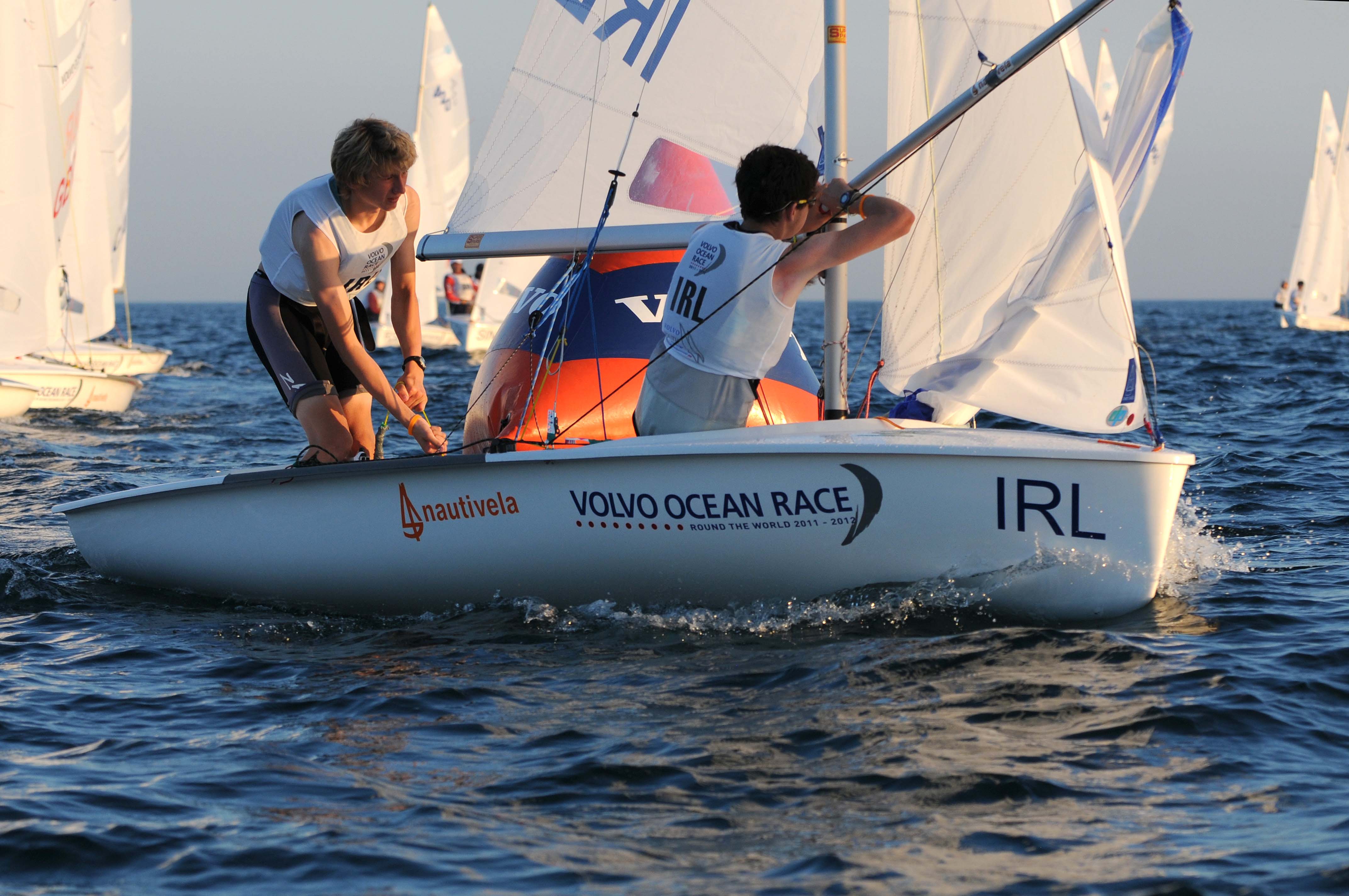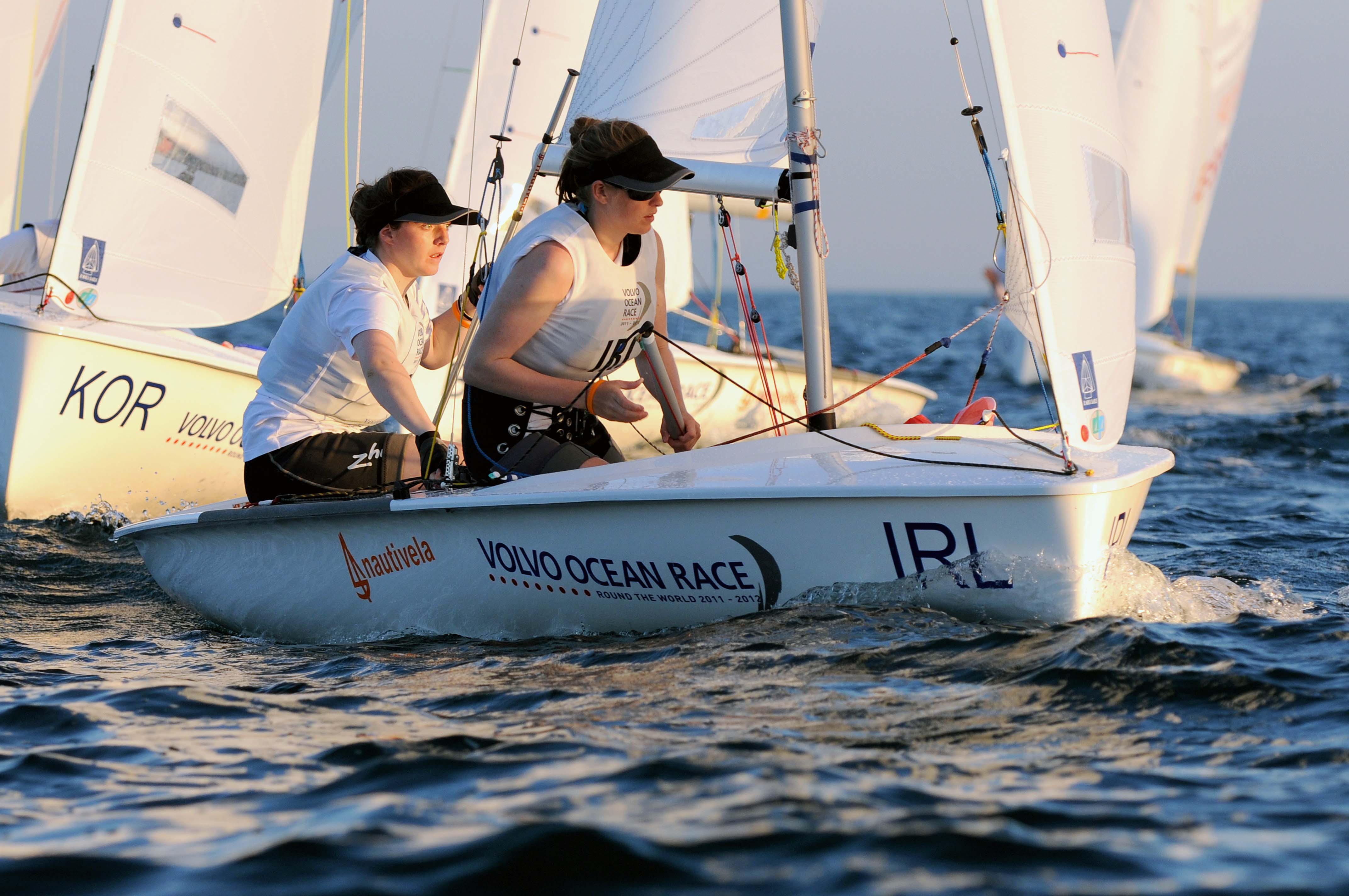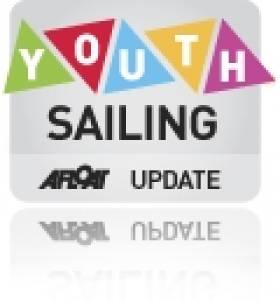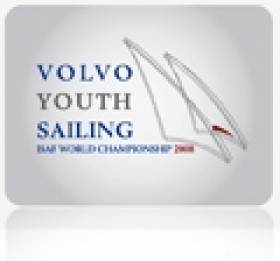Displaying items by tag: Youth Worlds
Black Flag and Top Threes for O'Dowd
Dun Laoghaire sailor Matthew O'Dowd will be hoping for wind at the Laser Radial Youth Worlds in Largs today so that he can bring a discard into play. Dowd will want to shed a black flag disqualification that he has carried from day one and get on with the business of notching up top three results in the group stages.
O'Dowd's record reads 2, BFD, 3, so far. He sat out the first race yesterday with a black flag penalty carried over from a race abandoned on the first day of racing.
He's now in 55th overall until the discard comes in.
Irish sailors Ross Vaughan in 29th and Ala Ruigrok in 40th take over the mantle of top Irish for now, with Ruigrok posting his best result, a seventh, yesterday.
Ruth Harrington is top Irish in the girls' fleet in 59th overall, with Saskia Tidey in 79th.
A steady six to eight knot breeze saw new stock emerging at the head of the leaderboard. With 42 nations represented and some of the world’s most talented youngsters here in Largs for this major international regatta, only the brave would, at this stage of the regatta, attempt to speculate as to who could emerge likely winners.
The racing today couldn’t have been much closer in both fleets with the consistent Americans scoring a collection of first places. In the Girls’ fleet, 17-year-old Erika Reineke from Florida, who took bronze at the recent ISAF Youth World Championship in Turkey, kicked off well with two second places in yesterday’s opening races, and today sailed impressively to better that position with two firsts. She is now in a strong position in the Girls’ fleet overall, just one point behind Manami Doi (JPN). Doi (Yellow flight) sailed an exceptional race again today, adding another first to her 2,1 scoreline.
In the Boys’ category, Sixteen-year-old Mitchell Kiss (USA) provided spectators with a fine display of impressive racing with a first place in Race 1, as did Yuval Schwartz (ISR). Fresh from the Europa Cup at Warnemünde Week, he also notched up a win in the first race in his flight. But it was Giovanni Coccoluto (ITA) with a win and a fifth who now leads the fleet by two points from Paul Leroy (FRA). With a 14th and 4th today, Elliot Hanson (GBR) is still lying in third place.
After today’s racing, a pattern is clearly starting to establish itself but there is one day of qualifying races remaining so it is still ‘early days’. Once the necessary four or more qualifying races are complete, boats will be assigned to final series fleets Gold, Silver and Bronze on the basis of their ranks in the qualifying series. The finals to determine the world champions will take place on Saturday and Sunday.
The event website is HERE.
More Irish Youth Lasers in Worlds Action
Ireland's youth laser sailors are once again in action in Europe, with the Radial Youth Worlds taking place in Largs, Scotland, and the Standard Rig Youth Worls ongoing in Poland.
Chris Penney posted good results to sit 34th out of 124 after two races.
Thirteen Irish sailors will compete at Largs in the boys fleet, with just two Irish girls, Saskia Tidey and Ruth Harrington, competing.
The Radials are currently sat on shore at Largs waiting for wind, and the committee aren't in the most positive mood.
"Unfortunately, the forecast is not looking ideal, with less than 5kts of wind predicted," they say on the official website
"High pressure will dominate to leave even more uncertain conditions for the rest of the week.
"Anything from the east is not ideal because this generally creates big, gusty winds, which whistle over the hills in the surrounding the area. Also because the water is so deep here on the Clyde – 120-140 metres in some places – setting the course in relation to the wind is also a challenge."
Right, so.
O'Dowd Moves Up in Light Airs
Matthew O'Dowd made best use of yesterday's light airs to count a podium finish and jump from 31st to 20th overall as the fleet takes a day off.
Competitors had to wait until 16:30hrs local time yesterday for the breeze to fill and then when the gun went a blaze of dinghies sailed off into the early evening sunshine to try and get at least one race completed. The breeze filled to around seven knots on the three courses but it remained puffy and made for a long day on the water for the race officials trying to set their courses as well as around 350 young sailors.
The RS:X boys and girls did complete two more races and the 29ers likewise but the Laser Radial fleets and the SL 16 Sirena cats only managed one race as did the 420 boys and girls who had to be towed ashore as darkness fell across the Marmara Bay.
Sophie Murphy sits in 23rd in the girls Laser Radial fleet, with the 420 girls, Jane Butler and Jenny Andreasson in 20th.
Scott Flanigan and Cian O'Regan have dropped from 11th to 19th after posting a 28th place in the third race.
Full results and news on www.isafyouthworlds.com


Youth Worlds Kick Off in Istanbul
This morning in Istanbul it'll be a long wait for wind, but the ISAF Youth Worlds are underway, with two races already in the bag. Ireland is represented in the 420 and Laser Radials in both boys and girls fleet, and as things stand, it's the Irish 420 boys who are performing best.
Scott Flannigan and Cian O'Regan sit 11th of 36 after two races, with their ninth place finish in the first race the only Irish foray into the top ten so far.
Jane Butler and Jenny Andreasson are 16th in the girls' 420 fleet, 28 boats strong, and Sophie Murphy is 22nd of 46 in the Laser Radials.
Dun Laoghaire's Matthew O'Dowd is in 32nd in the 50-boat boys fleet.
A special mention to the team currently leading the 29er fleet, two more nautical names you will never find in the one boat. Congratulations to Henry Lloyd Matthews and Samuel Batten.



























































